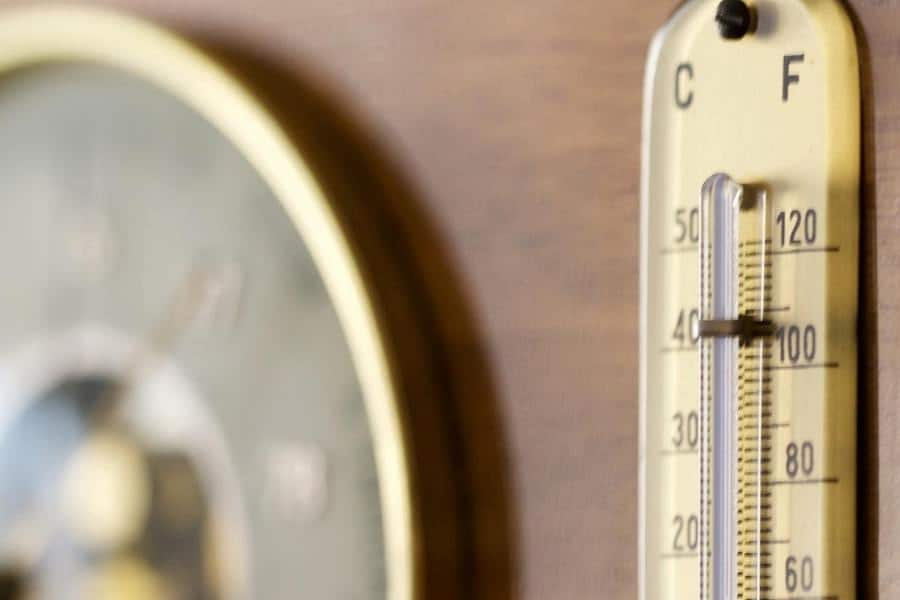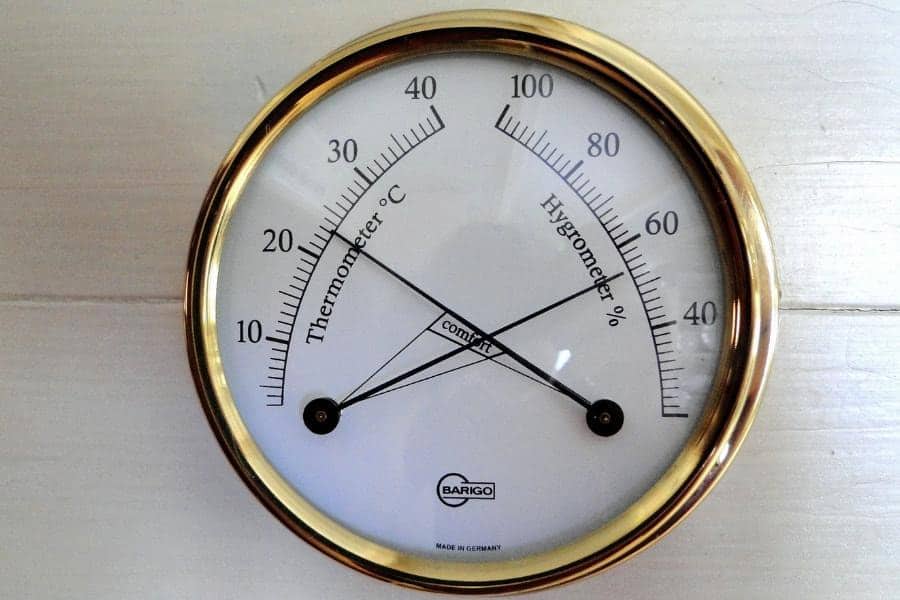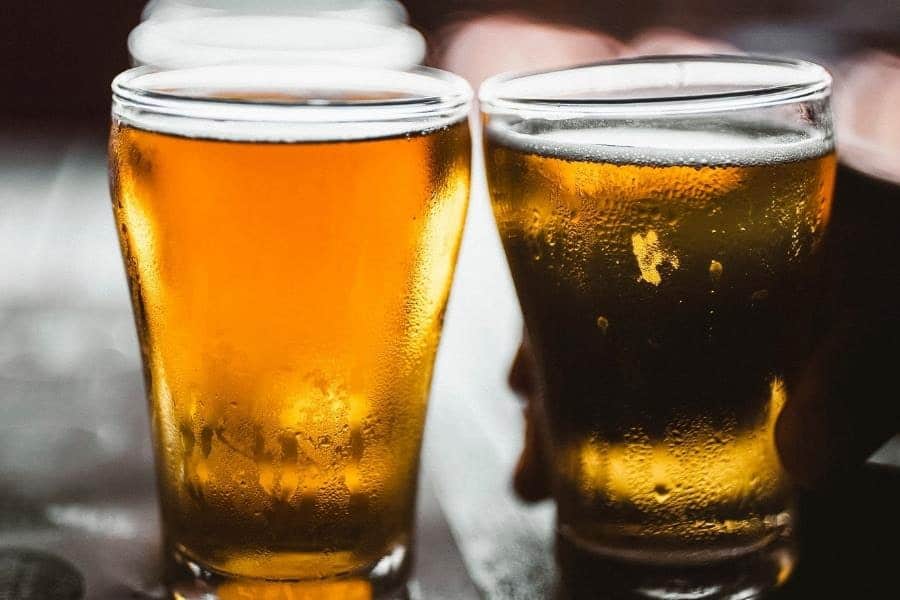If you buy something through a link in our posts, we may get a small share of the sale.
Measuring alcohol by volume, or ABV is a simple way to ensure that your drinks are properly diluted. It’s always calculated by taking the original gravity of wort or beer and subtracting the final gravity. However, there are ways how to measure ABV without an original gravity reading.
Contents
How to Measure ABV Without OG
To measure ABV without original gravity, You will need to have a hydrometer and a refractometer at hand. The hydrometer will help you get the beer’s final gravity, while the refractometer will give you the Brix value of the wort. Once you have those readings from the hydrometer and the refractometer, you can use a calculator to get the ABV.

It’s important to note that this method of calculating ABV is not as accurate as using original gravity. However, when compared to the ABV Calculator, the results will be pretty close and within the acceptable range that will not impact your beer. You only need to ensure that you understand how to use the calculator correctly to avoid any issues.
For instance, if you have a beer with an original gravity of 1.049 and final gravity of 1.008, the ABV would be 5.37%. On the other hand, if you have the Brix value of 6.0 and the final gravity of 1.008, you can use the calculator to get an ABV of 5.44%. As you can see, there is about a 0.07% difference in the two readings, which is still within the acceptable range and will not impact your beer.
Step-By-Step Guide on How to Use Hydrometer and Refractometer
These two instruments are the backbone of this method of measuring ABV without original gravity. Therefore, you need to understand how they work and how to use them properly.
A Hydrometer
It is a device used to measure a liquid’s density. It operates on the Archimedes Principle, which states that an object’s weight equals the volume of water it displaces. A hydrometer is usually made of glass and has a weighted bulb at the bottom. The stem is usually graduated in specific gravity (SG) units.
To use a hydrometer, you will need a sample of your wort or beer. The best way to get a sample is to use a sanitized syringe. Once you have your sample, you will need to float the hydrometer in it. Ensure that the stem is entirely submerged and the bulb is not touching the bottom or sides of the container.
Once the hydrometer is floating, you will need to look at the stem to see where the surface of the liquid crosses it. The specific gravity reading will be the number that is on the stem at that point. You will need to take two readings before fermentation and after. In this case, I am only concerned with the FG reading.
A Refractometer
A refractometer is a device used to measure the content of dissolved solids in a liquid. It works by shining a light through the liquid and measuring how much it bends the light. The more dissolved solids there are, the more the light will bend.
To use a refractometer, you will need a sample of your wort or beer. The best way to get an accurate reading is to take a sample from the fermenter. Place a few drops of the wort or beer on the prism and close the cover. Then, hold the refractometer up to your eye and look through it.
You should see a line at the boundary between the air and the liquid. The number that the line intersects with is your Brix or Plato reading. This is the reading that you will use to calculate the ABV.

How to Calculate ABV From Both the Readings
Now that you have your FG reading from the hydrometer and your Brix reading from the refractometer, you can use a calculator to get your beer’s ABV. Ensure you have an ABV calculator that is designed for both specific gravity and Brix readings.
The following are the steps you will need to follow in order to reach the correct calculation:
- Get the hydrometer’s final gravity reading and the refractometer’s Brix reading.
- Input the final gravity reading into the calculator.
- Select the specific gravity option from the drop-down menu.
- Input the Brix reading into the calculator.
- Select the Brix option from the drop-down menu.
- Click on the calculate button.
- The calculator will give you the ABV of your beer in percentage form.
Factors That Affect the Accuracy of This ABV Calculation Method
There are a few factors that can affect the accuracy of this method. It is important to know these so that you don’t get a false reading and end up with a beer that is either too weak or too strong.
The Temperature of the Wort or Beer
This is one of the most important factors that can affect the accuracy of your reading. The hydrometer is calibrated to be accurate at 59 degrees Fahrenheit. This means that the reading will be inaccurate if your wort or beer is not at this temperature. The same goes for the refractometer. It is calibrated to be accurate at 68 degrees Fahrenheit.
The Flavor of the Wort or Beer
Another factor that can affect the accuracy of your reading is the flavor of the wort or beer. The reading may be inaccurate if the beer is highly hopped. This is because hops can interfere with the ability of the light to bend properly.
The Ambient Temperature
The ambient temperature can also affect the accuracy of your reading. If it is too cold, the wort will be denser than it should be. This will give you a higher specific gravity reading and a lower Brix reading. Conversely, if it is too warm, the wort will be less dense than it should be. This will give you a lower specific gravity reading and a higher Brix reading.

The Efficiency of the Mash
The mash efficiency is the percentage of sugar that is extracted from the grain during the mashing process. The higher the mash efficiency, the more sugar will be extracted, and the higher the specific gravity of the wort will be. The lower the mash efficiency, the less sugar will be extracted, and the lower the specific gravity of the wort will be.
Frequently Asked Questions
How Do You Measure ABV at Home?
To measure ABV at home, you will need to take the original gravity (OG) and final gravity(FG) readings using a hydrometer. Then, use the formula (OG-FG)*131.25 to calculate ABV. Figure 131.25 is constant and is used to convert the OG-FG reading into percentage ABV.
What Can You Use Instead of a Hydrometer?
The best alternative to a hydrometer is a refractometer. You only require a few drops of wort or beer to get a reading, which is more accurate than a hydrometer. However, you will need a calculator to convert the reading into ABV.
Can I Use a Refractometer for Final Gravity?
No, you cannot use a refractometer for final gravity. This is because a refractometer only measures the dissolved sugar content, which does not change after fermentation.
Why Is My ABV Reading Different From the Estimated ABV?
Many factors can affect the accuracy of your ABV reading. The most common ones are the temperature of the beer, the flavor of the wort or beer, and the ambient temperature. Ensure that you consider these factors to get the most accurate reading possible.
Conclusion
If you have forgotten to take your original gravity reading, don’t worry. You can still calculate the ABV of your beer using the final gravity and Brix readings. Just use a calculator designed for this purpose, and consider any factors that may affect the accuracy of your reading.

